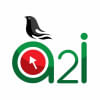Breaking the barriers

SM Sohel stooped over the keyboard in front, with close attention to a speaker, as he was trying to fix an image of a macaw over a text box on the computer.
Blind since birth, the high school teacher from Brahmanbaria struggled for quite a while to create an animation. He pressed “enter” and the image of a bird began emanating from the texts of a rhyme.
"Wow ... you have done it," his instructor told him.
A broad smile lit up his face.
He made the animation, using a software application called screen reader, for his students to see.
"Now I will make lessons more interesting to my children in class with the help of multimedia," said Sohel, an assistant teacher at Sabera Sobhan Government Girls High School in Brahmanbaria Sadar.
In January, Sohel and 24 other visually impaired teachers received training in basic computing and use of multimedia to do PowerPoint presentations in classrooms.
The training, first of its kind in Bangladesh, was jointly organised by Teachers' Quality Improvement, a project under the Directorate of Secondary and Higher Education, and Access to Information (a2i) Programme of the Prime Minister's Office, at the Teachers' Training College (TTC) in the capital.
The college in Dhanmondi facilitated the 14-day training while Young Power in Social Action (YPSA) and Bangladesh Visually Impaired People's Society gave technical support.
These correspondents attended one session to learn how these teachers were introduced to the modern technology.
Inside a large hall room at the institute's main building, the primary and secondary school teachers were all seated in front of computers with the screen reader software installed and keyboards that guide the users by telling them what they have pressed or selected.
The software application allows visually impaired people to read texts on the computer screens through speech synthesis.
The exact number of visually impaired teachers in Bangladesh is hard to come by. However, according to Vashkar Bhattacharjee, national consultant (web accessibility) of a2i, more than 100 such teachers are now working at schools across the country.
During the session, two facilitators were giving lectures on making digital contents and two trainers, who are unsighted themselves, were teaching techniques.
One of the trainees was Delwar Hossain Dulal, an assistant teacher at Bakal High-Songlogno Government Primary School in Agailjhara of Barisal.
"This training is very essential for people like us. Without computer, we cannot think of anything now, be it education or entertainment," he said.
Delwar, who teaches Bangladesh O Bishwa Parichoy (Bangladesh and Introduction to the World) to students of class-III and IV, said that upon returning to the school, he would develop digital contents on a chapter titled "Victory Day", using images of Pakistan army's surrender on December 16, 1971.
"It will help my students learn easily and effectively," he added.
Ummay Tanzila Chowdhury Munia was quick to respond to the instructions.
She was downloading a video on "Boishakhi Mela" from YouTube as she wanted to clip a part of it and project it while giving lessons.
“It will be fun teaching students with multimedia,” said Tanzila, who teaches at Mohsina Model Government Primary School in Patia, Chittagong.
There are many institutions training people with eyesight, but such training to visually challenged people is unheard of, said Rashedujjaman Chowdhury, a trainer and programme officer of YPSA.
“It is a big opportunity for them," he added.
There will be a positive impact as the teachers go back to their schools and teach students using computers and multimedia, said Rashedujjaman, who is blind himself.
Multimedia classrooms have been set up in 20,500 secondary and 5,400 government primary schools across the country to facilitate modern methods in teaching 4.2 million students. The classrooms have been equipped with laptops, projectors and internet modems, government data shows.
The progress of the trainees in developing digital contents is encouraging, said Mirza Mohammad Didarul Anam, a lecturer at the Teachers' Training College.
He was explaining to them how to use technology to improve their teaching methods.
Didarul, who works on e-learning method and policy, said the training was on how to blend ICT skills, pedagogy and subject knowledge together to make classroom materials.
He, however, cited some challenges the visually challenged teachers face.
First is the selection of images and videos, for which they need support of a sighted person. Secondly, the screen reader software sometimes conflicts with other software programmes.
However, Vashkar, of a2i, who too cannot see, said the training would help remove communication barriers between visually impaired teachers and their students.
"It is not possible for them to get back their sight, but with the knowledge of computer and information technology, they will become capable like others."

 For all latest news, follow The Daily Star's Google News channel.
For all latest news, follow The Daily Star's Google News channel. 








Comments